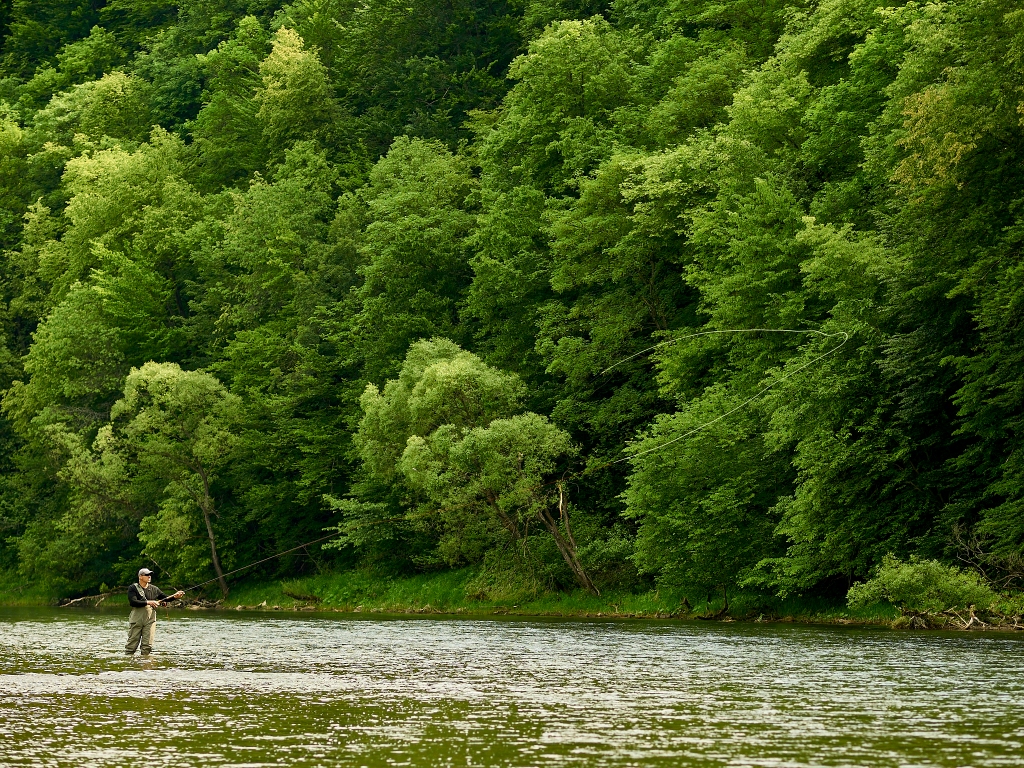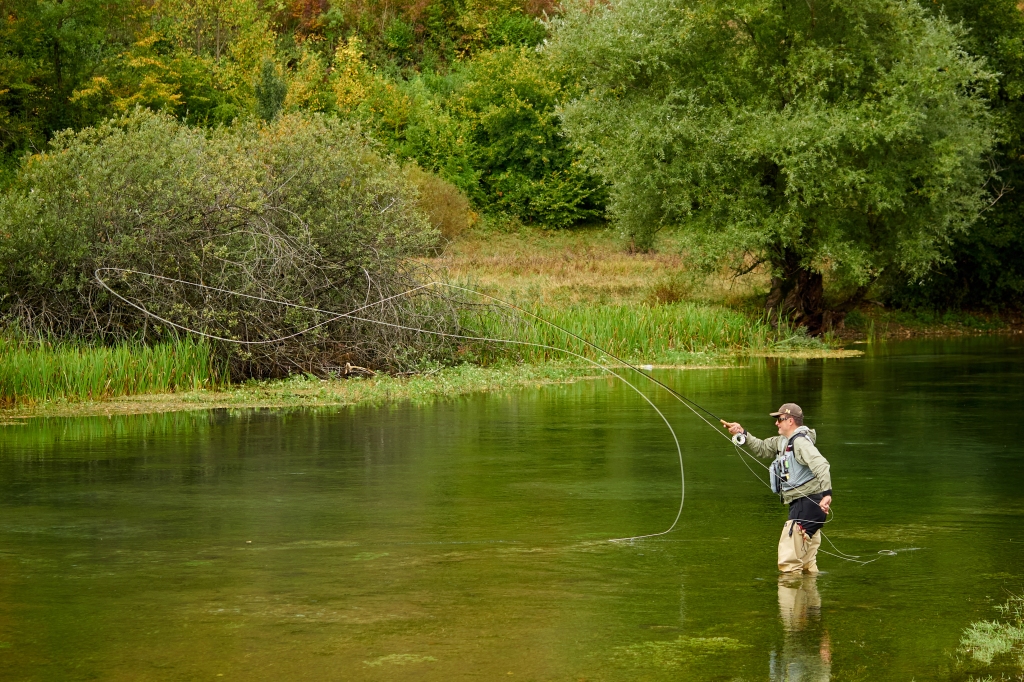
A fly casting student of mine was recently complaining about how tricky it is to train Roll casting on grass. I decided to explain to him the reasons for that with a short video clip and some simple explanations.
As shown on the video below an anchored cast rolls effortlessly while an unanchored one slips backwards creating problems.
Notice that the issue of Roll casting on grass is that the latter does not grip the line as water does, and for the anchor to properly fulfill its tasks it has to hold.
- If the dead line is moving backwards more energy is required to make it to change direction towards the target than if it were stationary in the first place, as it is the case of a holding anchor.
- By the time the dead line has finished its slippage the fly is further away from the target than with an anchor that holds in place; covering more distance to reach the target takes more additional energy.
- The delivery loop has a tendency to get much wider (the line doesn’t follow the rod tip path unless both are properly aligned), increasing air drag and wasting energy again.
To summarize: an anchor on grass doesn’t hold and that issue leads to some waste of energy that translates into a lose in fly line speed on the delivery cast.

